Those Incredible Raptors!
- Barbara Seith

- Jul 14
- 3 min read
There is a great diversity of Raptors in Kruger -- I haven't even seen close to all of them and I am already in AWE! They include Buzzards, Eagles, Falcons, Harriers, Hawks, Hobbys, Kestrels, Kites and Vultures -- and I'm sure I missed a few like Owls! They are very different boxes of chocolate -- but they all have strong talons and hooked beaks meant for eating other animals. Here are most of the ones I saw on this trip
African Fish Eagle - We had 16 separate sightings of this beautiful raptor and lots of photo opportunities. Most US citizens remark on its similarity to a Bald Eagle. The Fish Eagle distinguishes itself with a bid that goes into the chest & back, where as the Bald Eagle's white plumage ends at the neck -- also the Fish Eagle had both rich brown and black patches on its body. Like the Bald Eagle it take 4-5 years to get to adult plumage. As you might imagine, the Fish Eagle eats only fish, snatching it from the surface and is often mistaken for an Osprey.

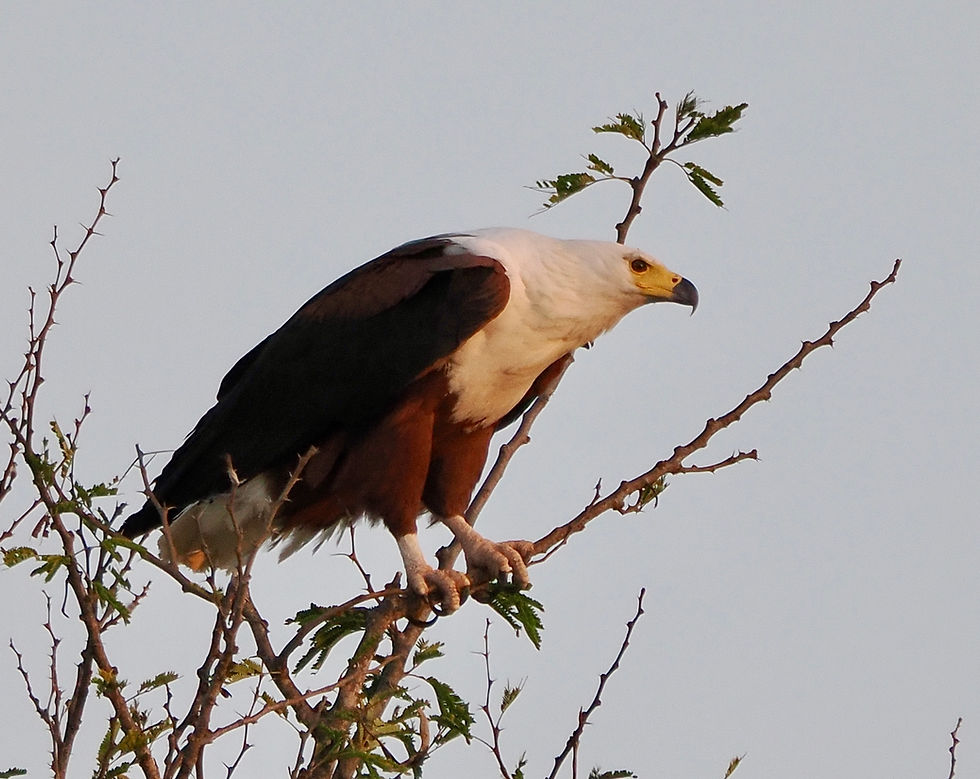


Bateleur - means Acrobat in French and refers to the Bateleur's flying pattern, tilting from side to side as trying to balance, like a tightrope walker. This makes them relatively easy to identify at a distance, unless there is a stiff breeze -- then almost all raptors make that movement. It is the most colorful raptor that matures in 6-7 years.
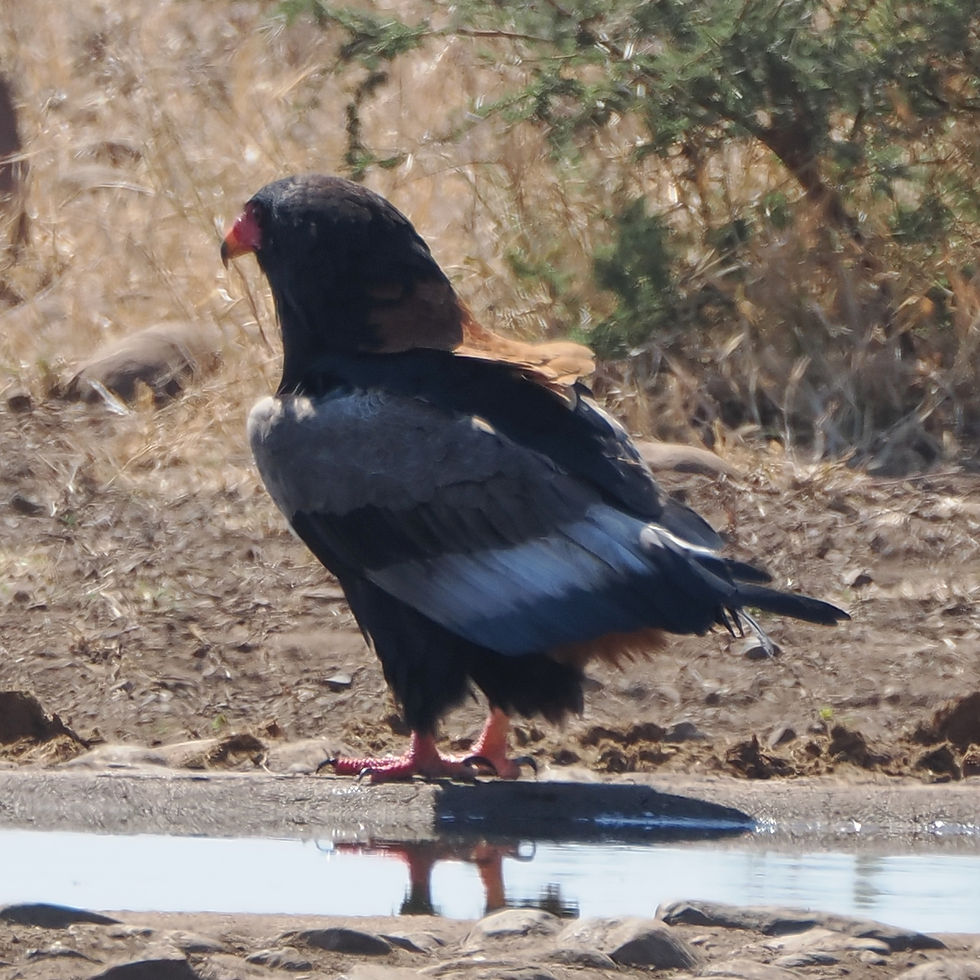
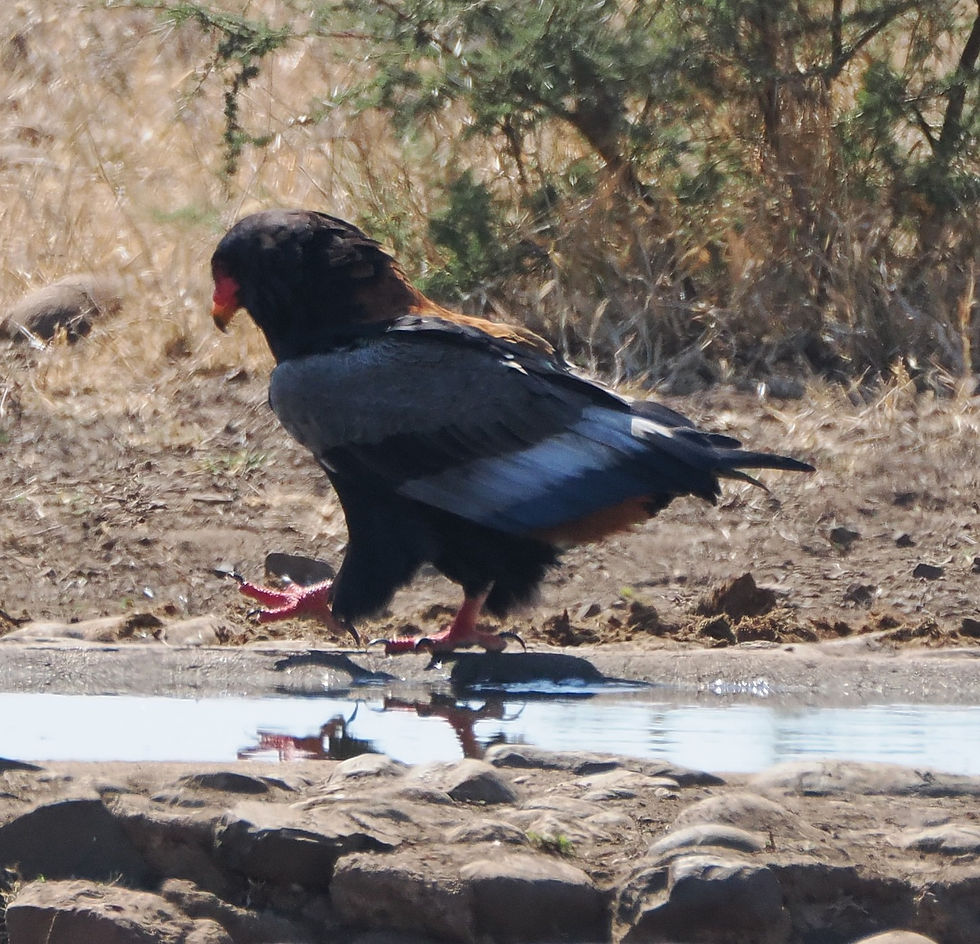


We saw this Bateleur fly in with its prey (Puff Adder) and start to consume it once it landed on the snag.
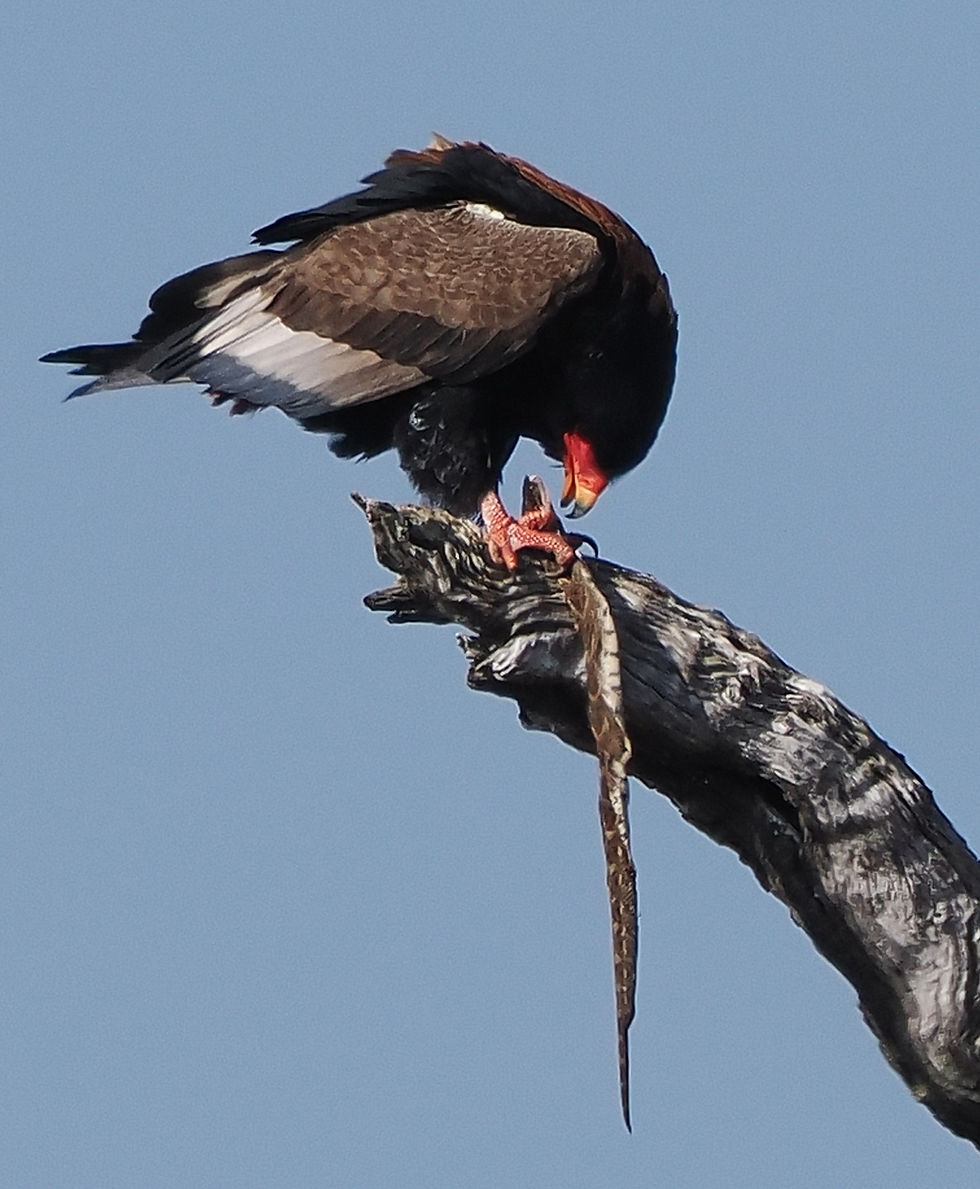

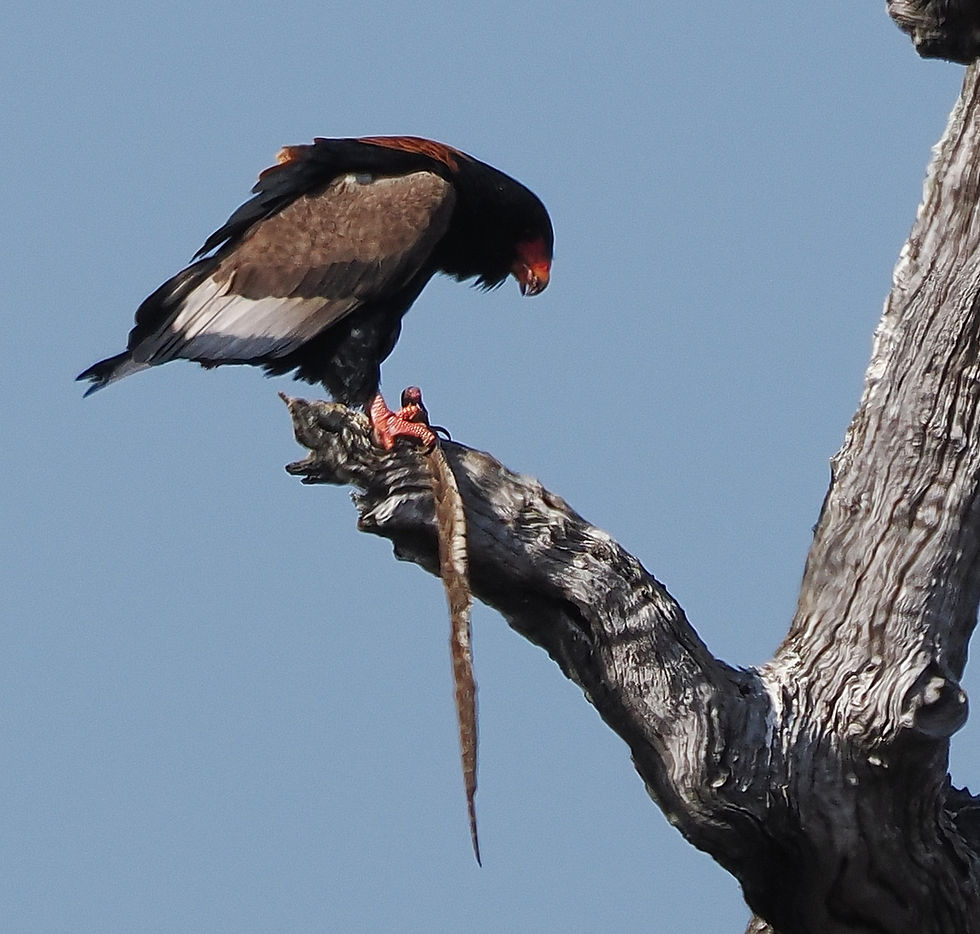

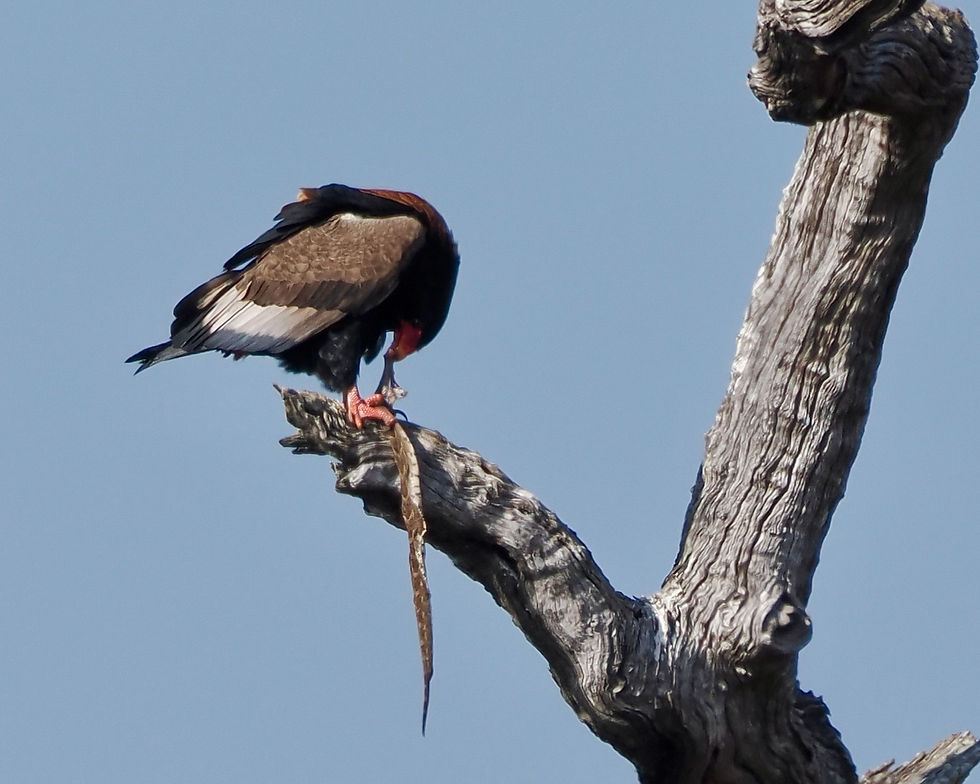
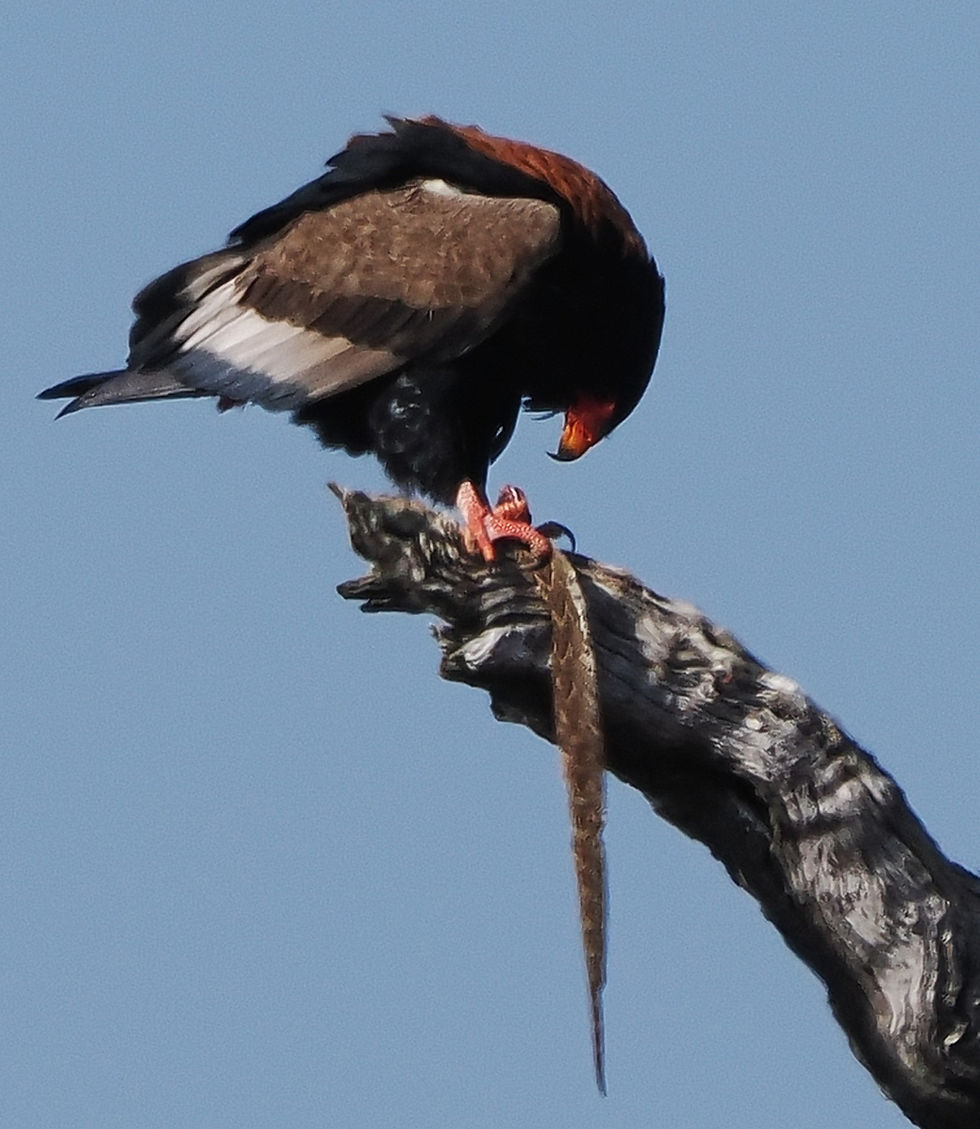
Tawny Eagle - This large raptor often pirates food from other predators and scavenges with Vultures & Bateleurs. Check out the "Blue Edition" post for shots of this raptor mating.


Brown Snake Eagle - I'm sure you've guessed that it eats snakes - from below it has mostly white wings, with a thick brown strip on the leading edge. They sit very upright and have an amazing yellow eye.
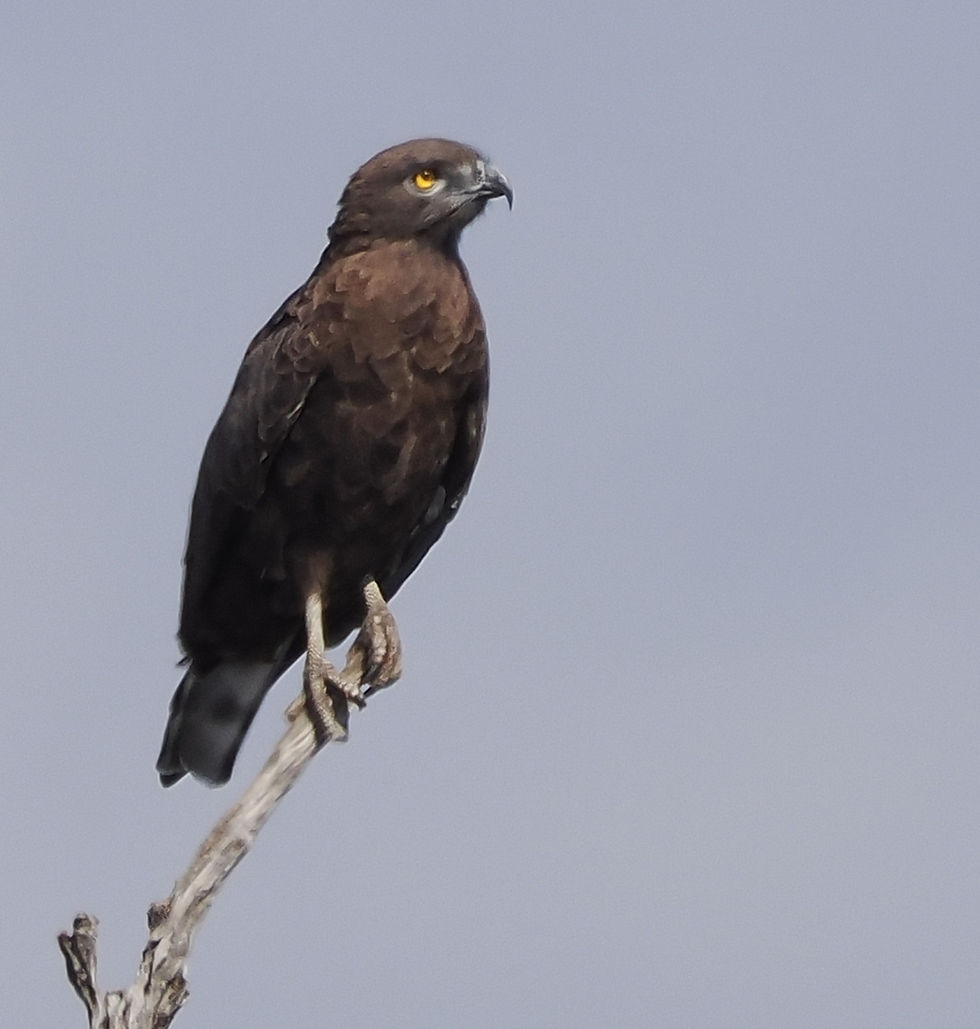



African Hawk-eagle - They like to hide in leafy trees and that is where we found this one, although they are normally spotted in pairs, there was only one on the occasion of the photo. Most of our other sightings we saw two together.
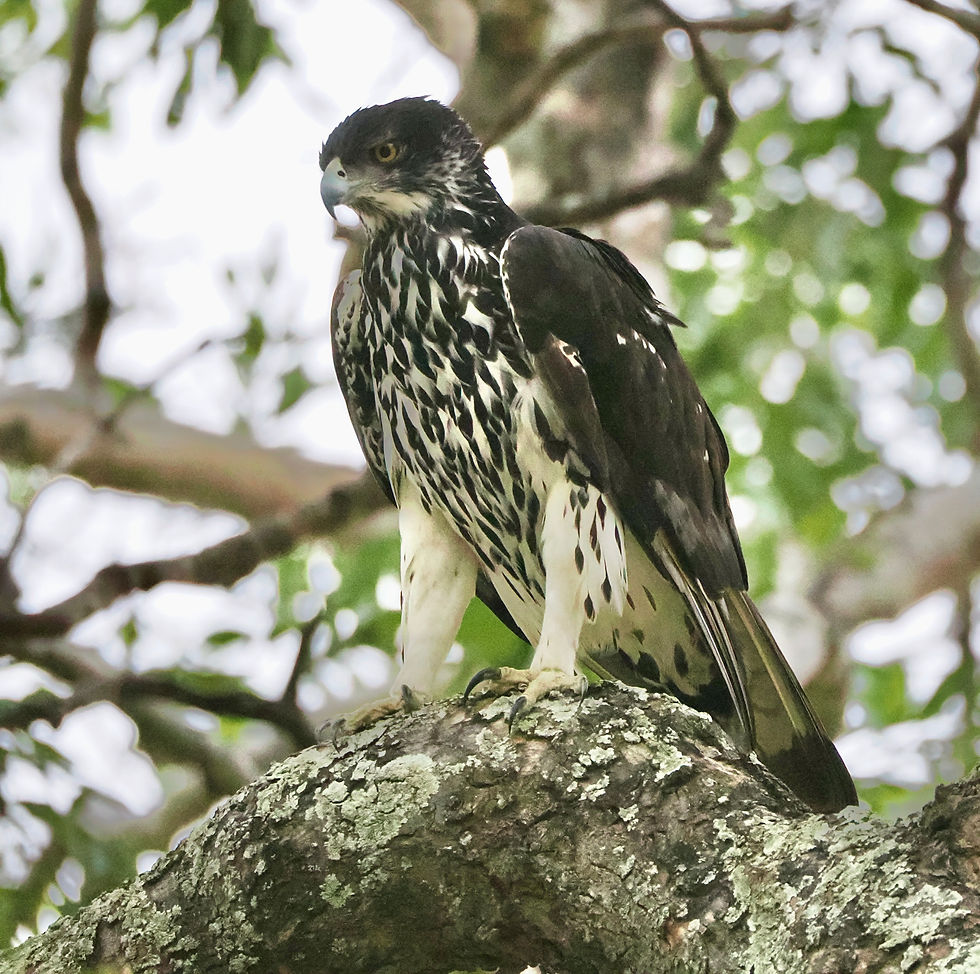


African Harrier Hawk - One of the most beautiful raptors, in my humble opinion. I love it's face markings. Fun fact - its leg joint can bend both ways. Cool a double-jointed bird! It also likes to poke its head in holes!



Vultures - These large scavenging are know for feeding on carrion. Although they are unquestionably ugly, they are critical to maintaining the eco-system, helping prevent the spread of disease by cleaning up dead animals. They often fly together in kettles and gather on the ground in mixed flocks. The groups below include White-backed, Lappet-faced & Cape Vultures
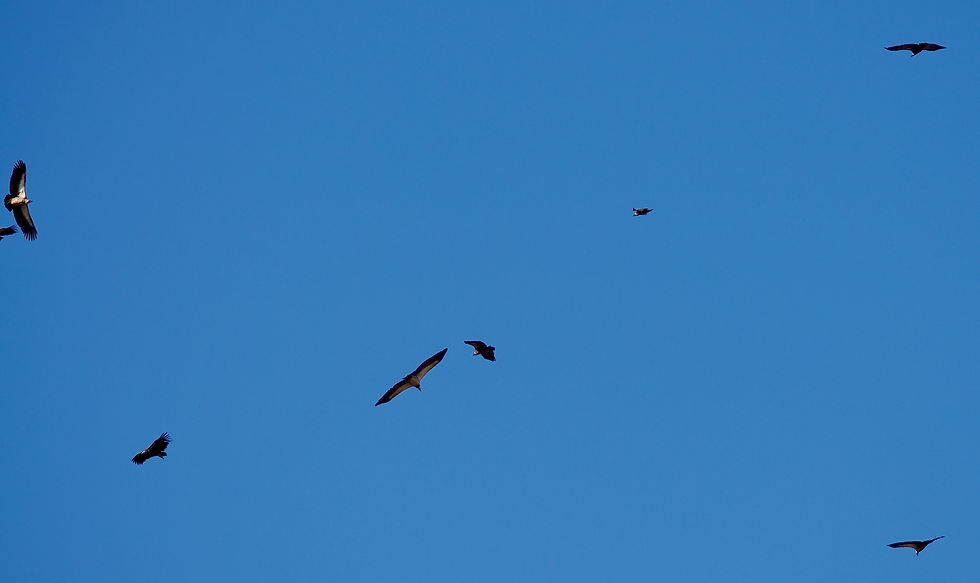



White-backed Vulture - Although this species is critically endangered, you would not have know it based on my trip. We saw almost 100 in many different parts of the park. It is, after all, it is the most common vulture in Kruger.
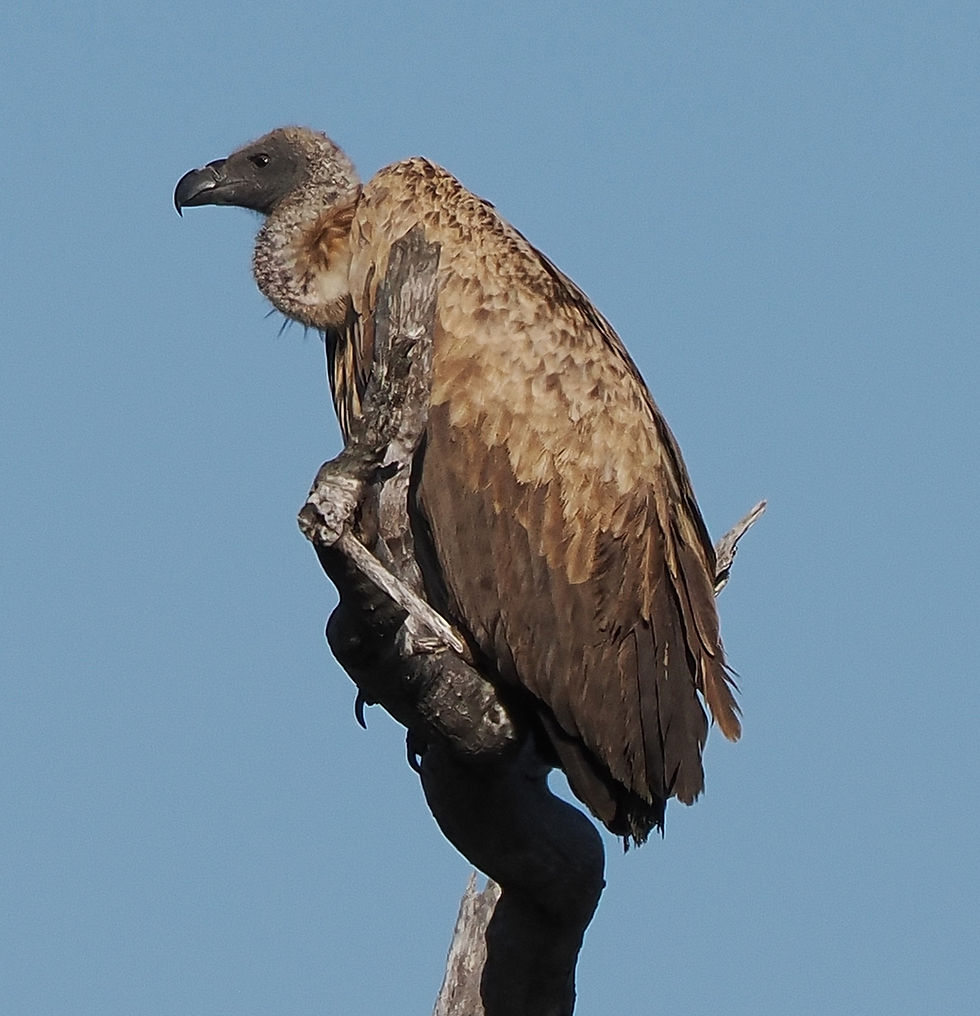

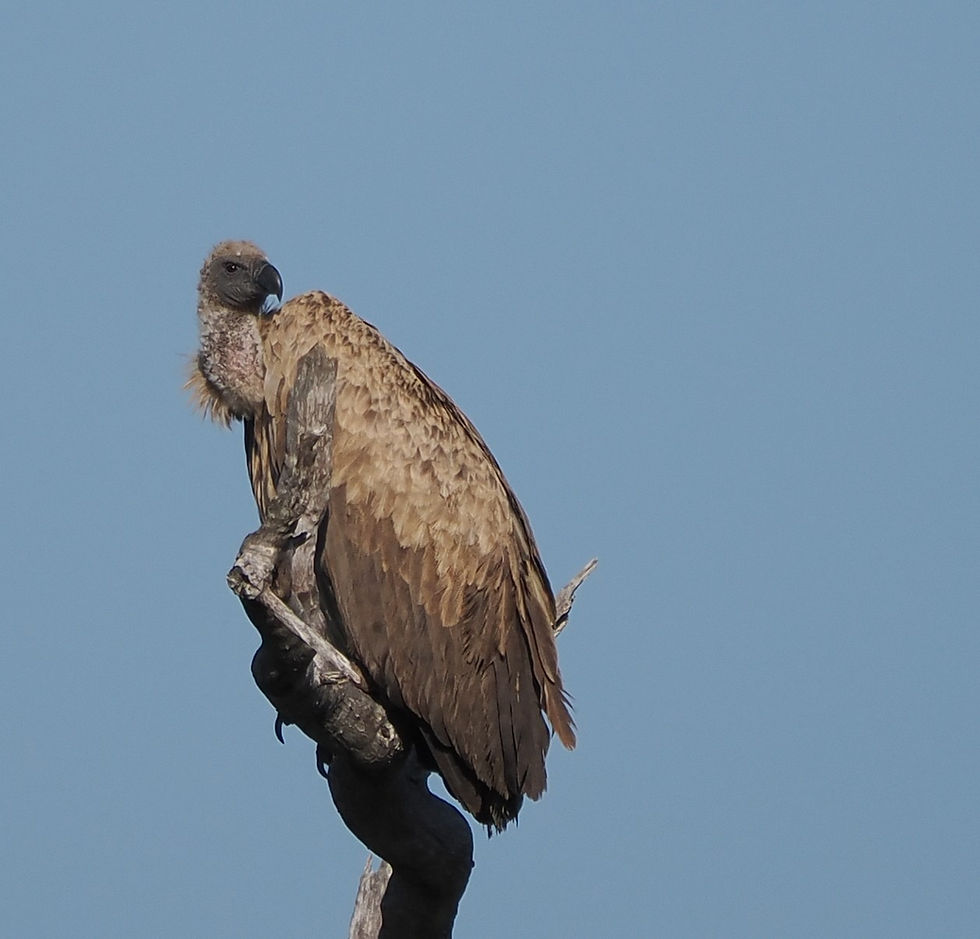

White-headed Vulture - Although I saw this species on the last trip, I did not get a good photo. I was very happy to get one of this so ugly it is beautiful bird toward the end of the trip. It was perched alone shaded in a tree.

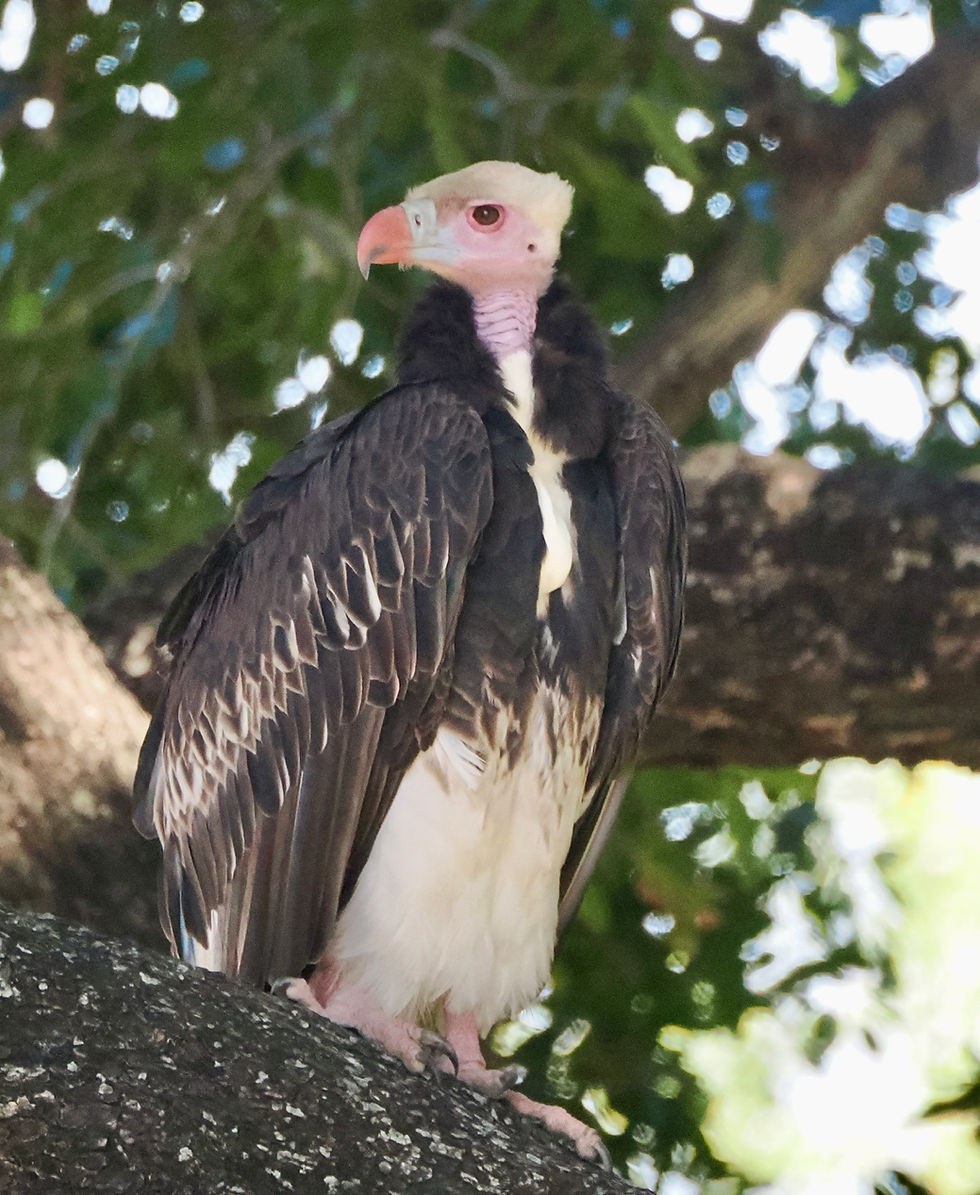
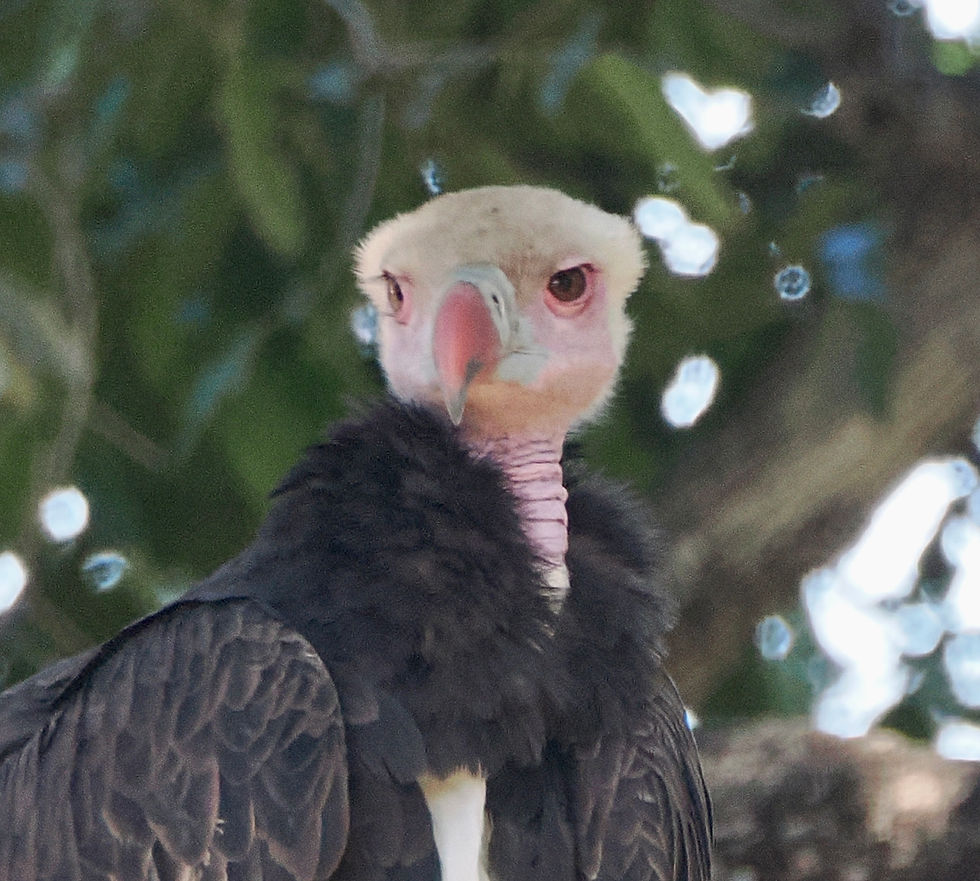


African Scops Owl - This little one could fit in the palm of your hand and it very difficult to spot. We saw this one at a lunch stop at Mopani. Full disclosure someone told us it was there. Extremely difficult to photograph due to the branches, still got the photo!
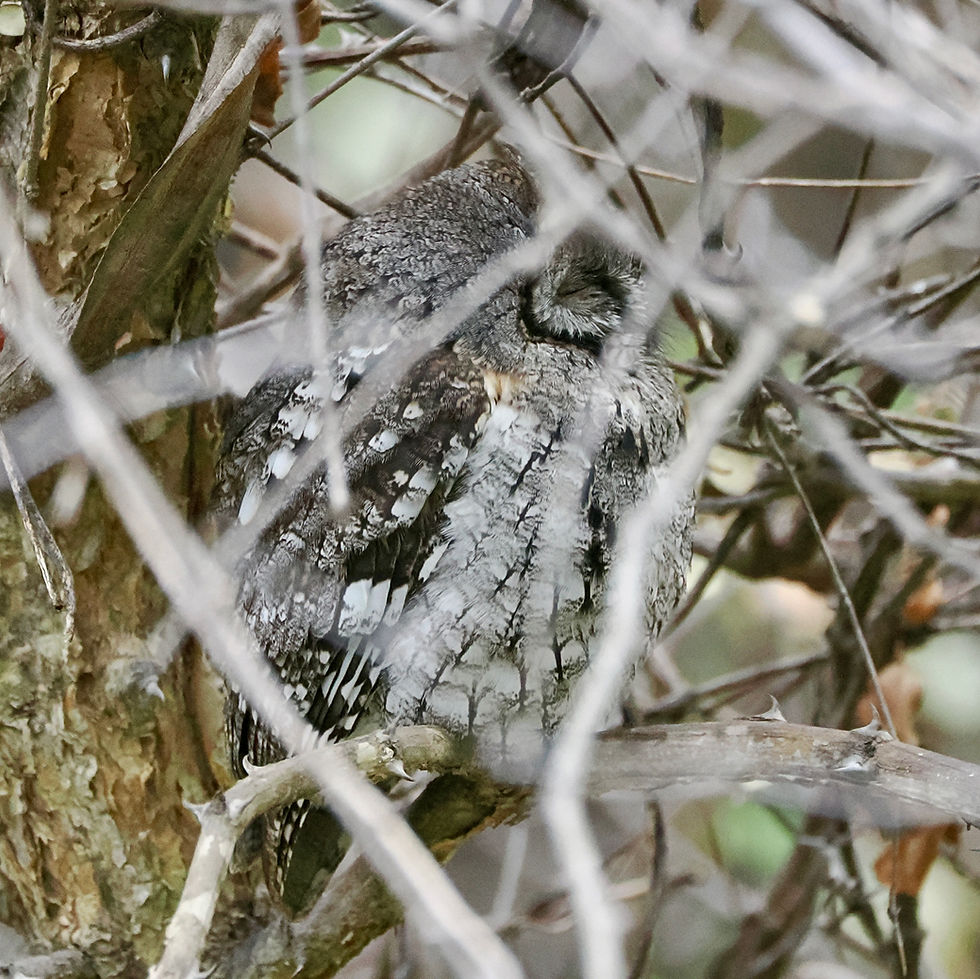
Western Barn Owl - Mopani that day was a virtual Owl magnet. About 30 feet away from the Scops Owl's tree was this beauty tucked up into the ceiling of a walkway which was kind of like a barn. Not my first of this species, but with Owls, every sighting is special. This was a couch bird (earned by changes in the bird list, not due to anything I did) for me in 2024, so it will always be extra special.

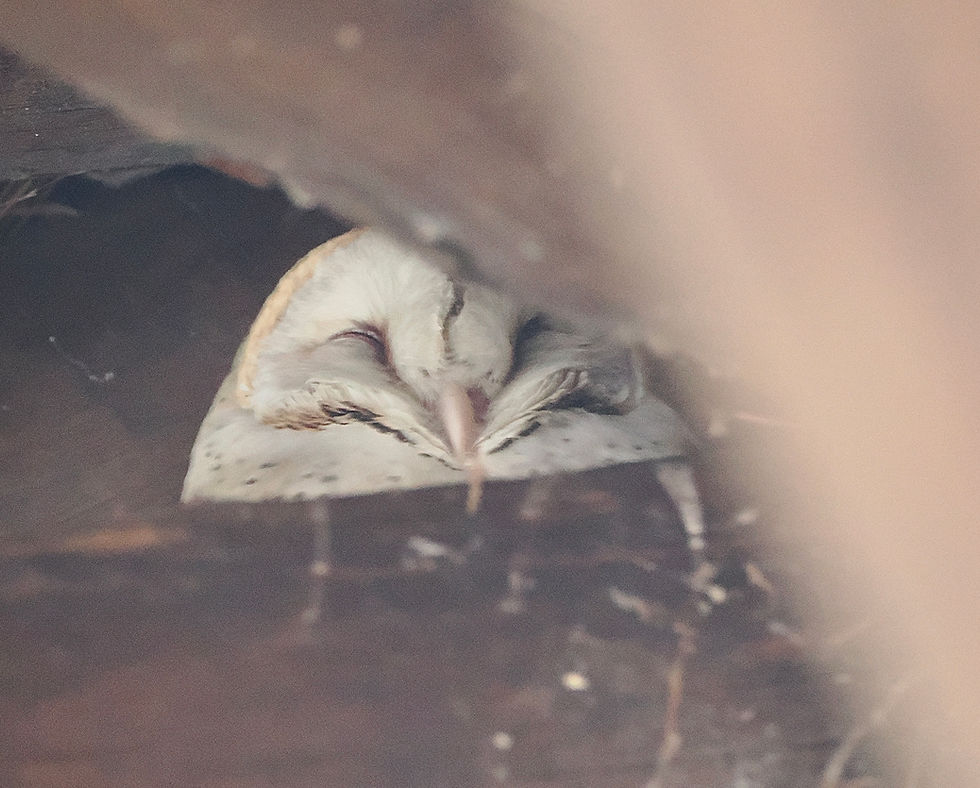
Pearl-spotted Owlet - At about 7 inches tall, this little bird is often the target of a raucous mobbing party of other birds. It eats birds, so that seems odd, but I witnessed it on our last morning in Kruger -- what a treat! The cacophony was incredible.
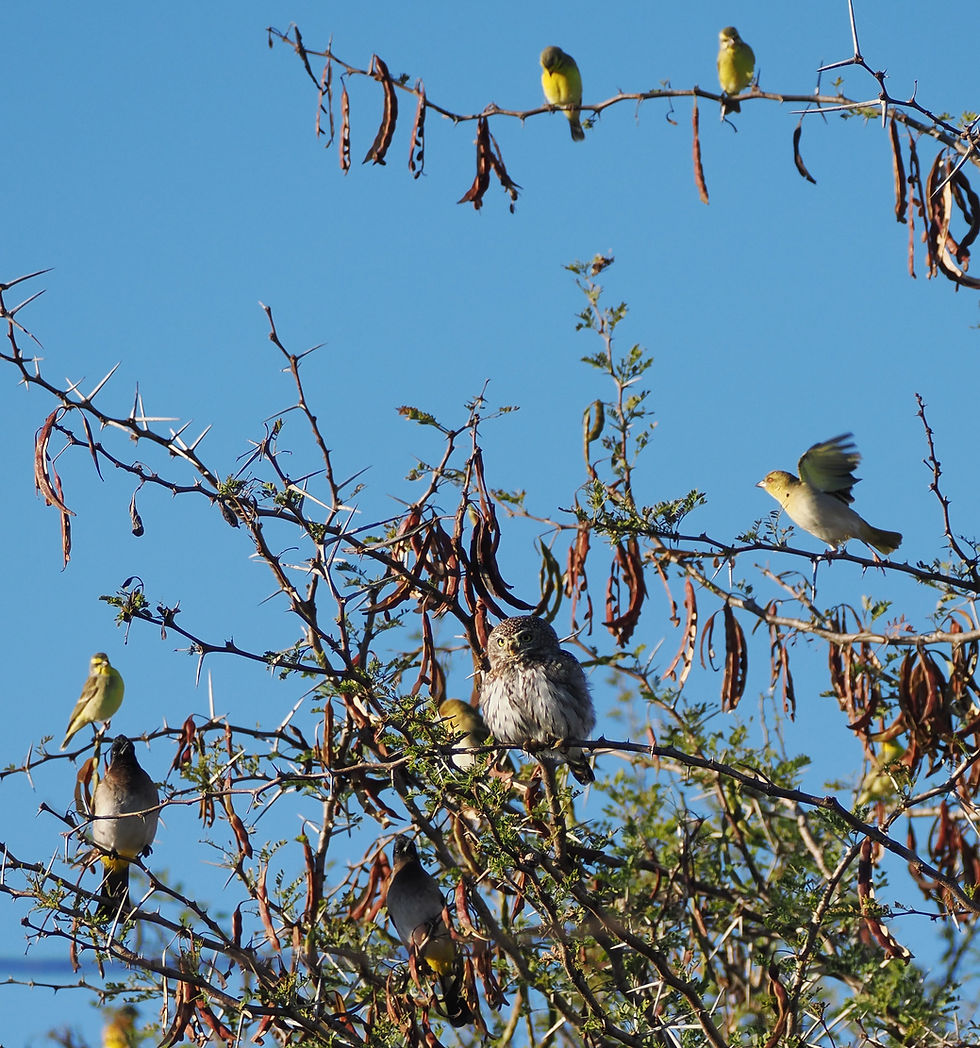
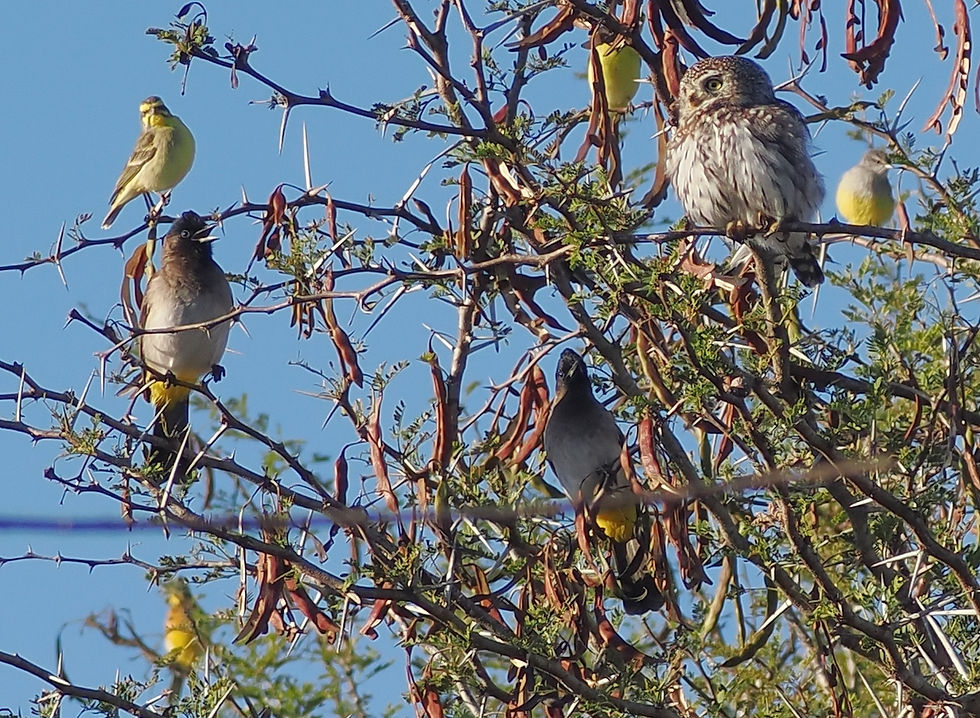

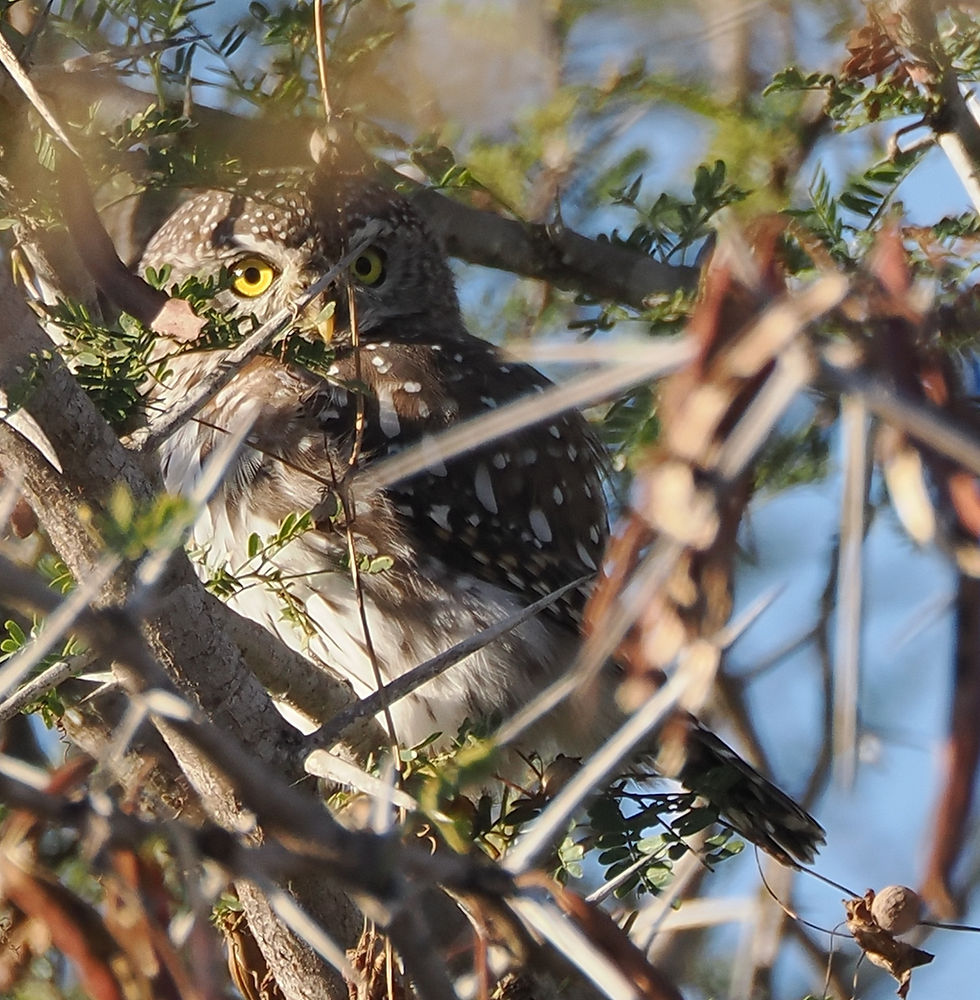
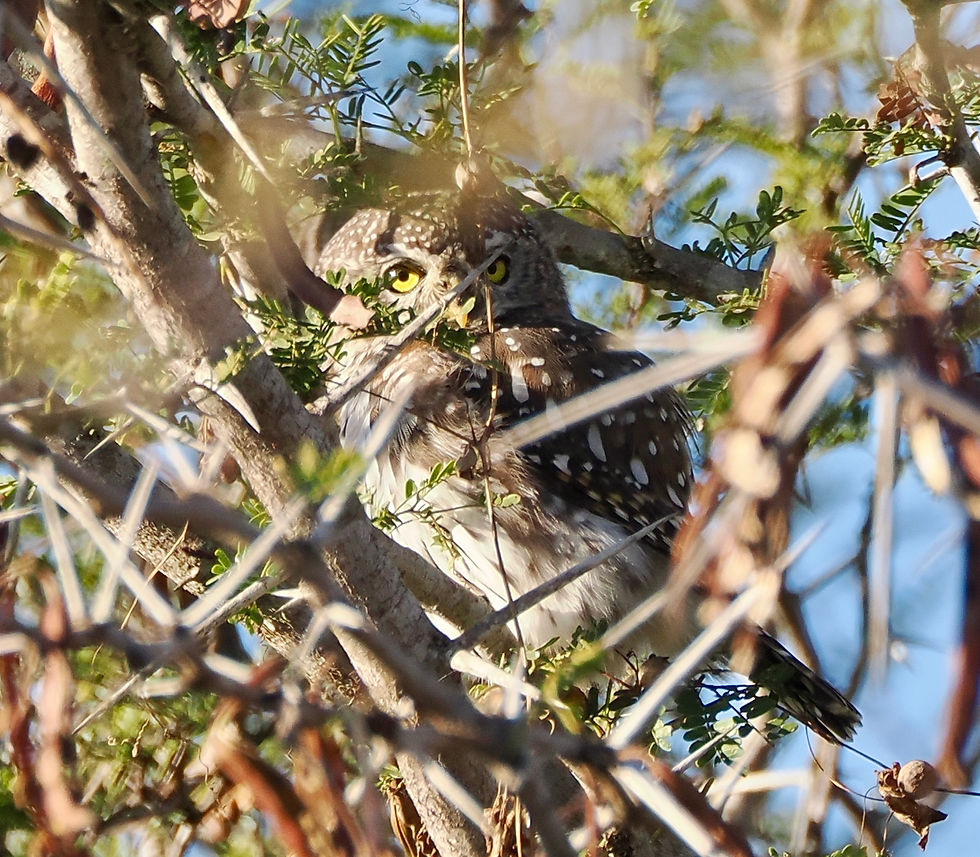



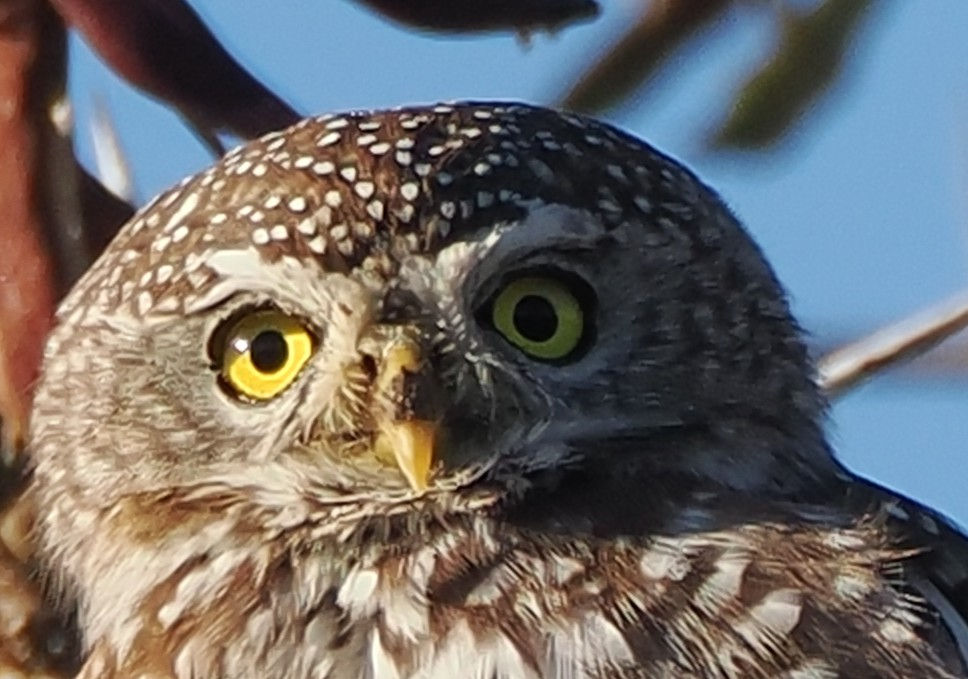
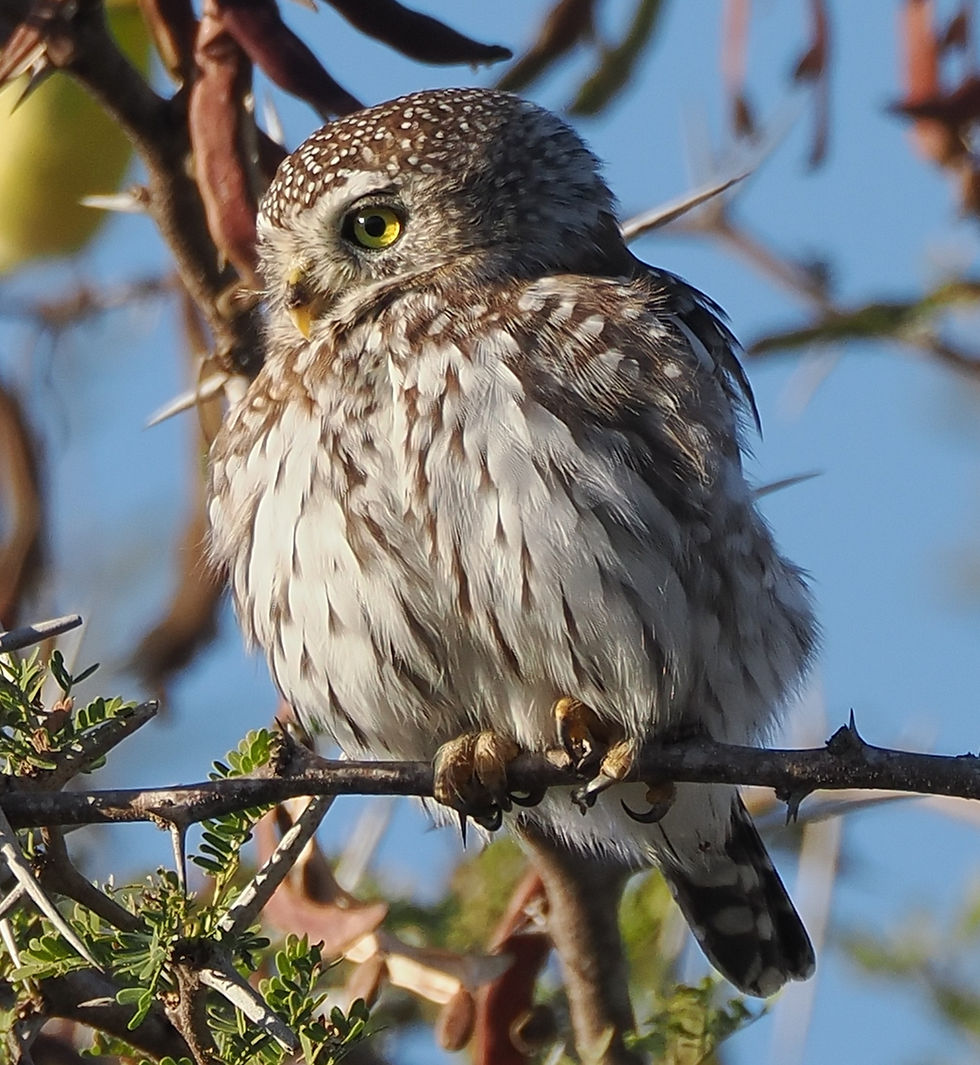

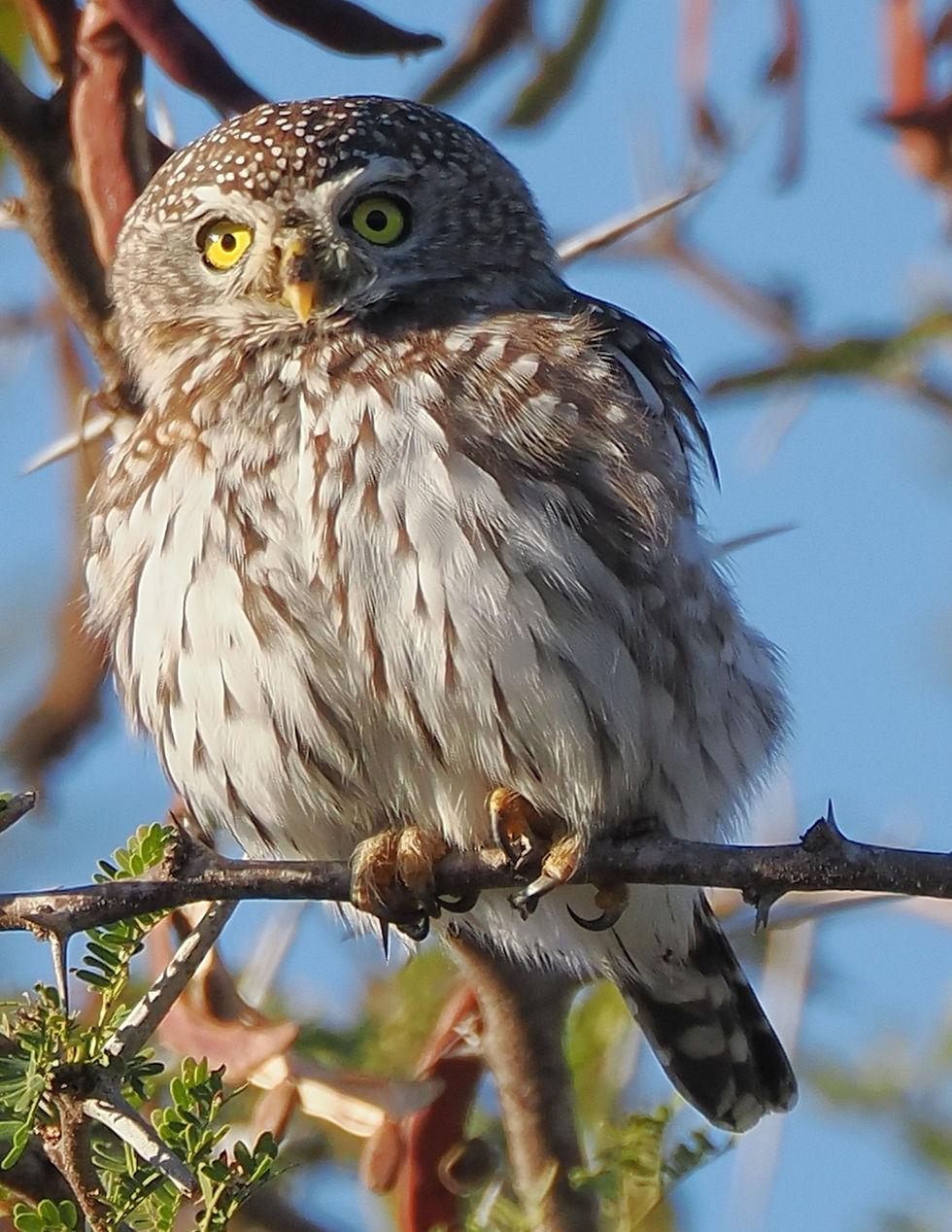


Pel's Fishing Owl -- has already had its due in Life Birds & the Big Six.



Comments